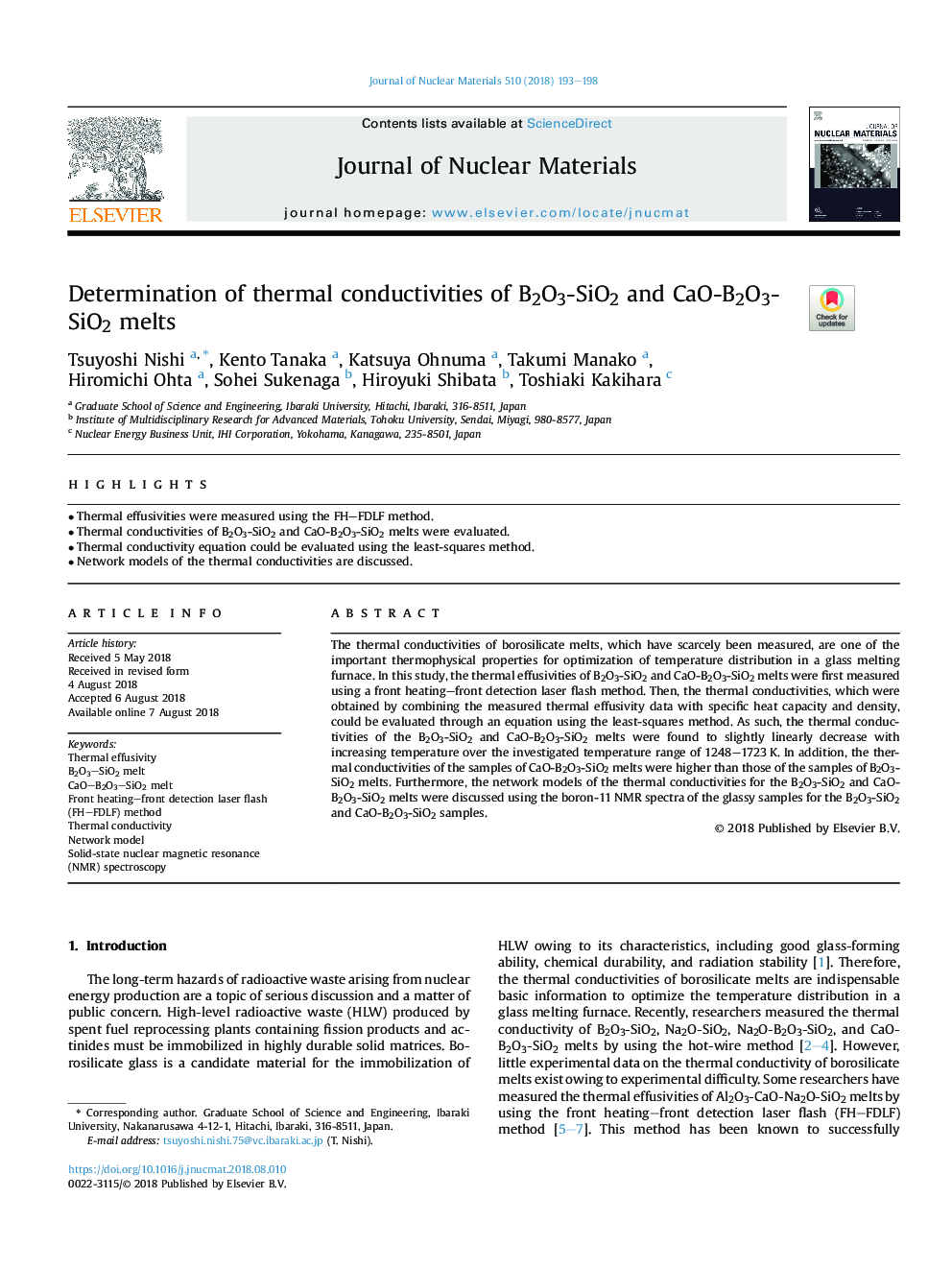| Article ID | Journal | Published Year | Pages | File Type |
|---|---|---|---|---|
| 7962919 | Journal of Nuclear Materials | 2018 | 6 Pages |
Abstract
The thermal conductivities of borosilicate melts, which have scarcely been measured, are one of the important thermophysical properties for optimization of temperature distribution in a glass melting furnace. In this study, the thermal effusivities of B2O3-SiO2 and CaO-B2O3-SiO2 melts were first measured using a front heating-front detection laser flash method. Then, the thermal conductivities, which were obtained by combining the measured thermal effusivity data with specific heat capacity and density, could be evaluated through an equation using the least-squares method. As such, the thermal conductivities of the B2O3-SiO2 and CaO-B2O3-SiO2 melts were found to slightly linearly decrease with increasing temperature over the investigated temperature range of 1248-1723â¯K. In addition, the thermal conductivities of the samples of CaO-B2O3-SiO2 melts were higher than those of the samples of B2O3-SiO2 melts. Furthermore, the network models of the thermal conductivities for the B2O3-SiO2 and CaO-B2O3-SiO2 melts were discussed using the boron-11 NMR spectra of the glassy samples for the B2O3-SiO2 and CaO-B2O3-SiO2 samples.
Related Topics
Physical Sciences and Engineering
Energy
Nuclear Energy and Engineering
Authors
Tsuyoshi Nishi, Kento Tanaka, Katsuya Ohnuma, Takumi Manako, Hiromichi Ohta, Sohei Sukenaga, Hiroyuki Shibata, Toshiaki Kakihara,
